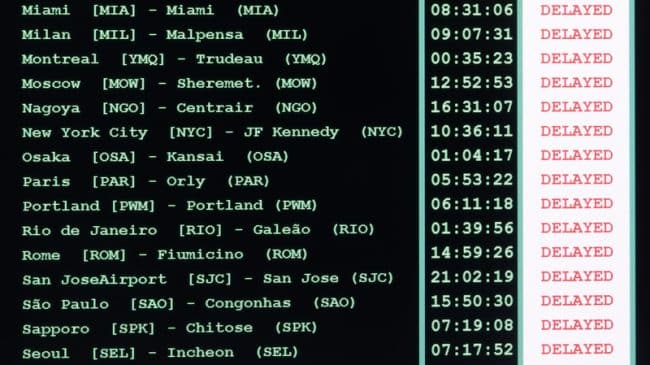Every time you fly, your flight is guided by air traffic controllers, based at several hundred facilities across the country.
Their job is to keep planes separated from each other, and speed them on their way, using technology and procedures.
Unfortunately, although our air traffic control (ATC) system is the world’s busiest, it is no longer the world’s most-advanced — or the most efficient. While it remains safe, it is the cause of flight delays and increasing congestion that will get far worse in coming decades without fundamental reform.
At the Miami and Fort Lauderdale airports, 41 percent of all delay-minutes last year were due to ATC constraints.
The underlying cause of these problems is that ATC — a high-tech, 24/7 service business—is trapped inside a large federal bureaucracy, the Federal Aviation Administration (FAA). Its funding comes from an increasingly strained federal budget. It is subject to all kinds of political second-guessing. And has a bureaucratic process for developing new technology that rivals that of the Defense Department for generating cost overruns, late delivery, and overly complex end-products.
These problems were not unique to the United States. Historically, nearly all countries operated ATC as a part of their transportation agency. But in 1987, the reformist Labor government of New Zealand moved its ATC system out of the transport ministry, converting it into a public utility company.
Airways New Zealand charges airlines fees for its services, and issues revenue bonds to pay for major projects. The new approach worked well, and in the next 15 years over a dozen other countries did likewise. For many years, aviation experts in the U.S. have advocated a similar reform here, to no avail. Meanwhile, over 60 countries have de-politicized their ATC systems by moving them out of government, reinventing them as self-supporting service providers.
Now, a bill to move our ATC system out of the FAA and convert it into a nonprofit ATC corporation is poised for a House vote this month. It has the support of unions representing air traffic controllers, pilots, and flight attendants, as well as all the major airlines, the Business Roundtable, and a long list of former senior officials of the U.S. Department of Transportation and the FAA.
The U.S. ATC corporation would closely resemble Nav Canada, the world’s second largest ATC provider, which was converted to a self-supporting nonprofit corporation in 1996. Like Nav Canada, ours would have a governing board of 13 members, appointed by all the aviation stakeholders — including controllers, pilots, airlines, airports, and private plane operators. It would be entirely supported by ATC charges, meaning that existing aviation taxes would be cut by $11 billion per year. And it would be regulated for safety by the FAA, just as airlines, airports, aircraft producers, and others are regulated.
Nav Canada is at least a decade ahead of the FAA in implementing advanced technology such as GPS surveillance of where planes are (more accurate than radar) and digital communications between pilots and controllers. And because it is a customer-focused business, it develops much of the new technology in-house, at far lower cost than systems developed via FAA’s vast bureaucratic system. Because it delivers more bang for the buck, Nav Canada’s ATC fee levels today are 40% lower than they were when it began operations. During those same two decades, FAA’s budget has doubled.
If this reform actually makes it through Congress, passengers will benefit in several ways. First, most of the $11 billion in current aviation taxes, paid by passengers, will be repealed. Second, technology similar to Nav Canada’s will mean far more “direct” routes, saving passengers time (and reducing fuel use and emissions). Third, the new technology will reduce delays due to ground holds and other ATC constraints, making flights more reliable.
This sounds very good, but the reform might not make it through Congress. A small but very vocal opposition, paid for largely by the business jet trade group NBAA, claims the reform would mean giving control of the system to the “big airlines” and would threaten continued ATC services at small airports. In fact, “big airlines” would nominate only one out of 13 board members, and the bill has numerous provisions to protect small airports and their towers. And as a concession to private pilots, the bill would exempt, by law, all private planes from having to pay ATC fees, including business jets.
It would be tragic if opposition from well-heeled business jet users prevented hundreds of millions of air travelers from getting faster and more reliable flights. But that’s what is at stake in this major reform effort.

